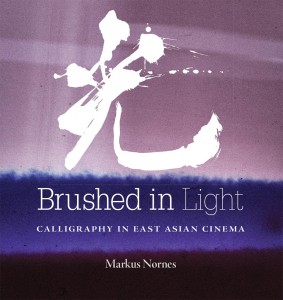Brushed in Light
Calligraphy in East Asian Cinema (livre en anglais)


Moyenne des votes : ![]()
| 0 | vote | |
| 0 | vote | |
| 0 | vote | |
| 0 | vote |
Votre vote : -
Description de l'ouvrage :
Drawing on a millennia of calligraphy theory and history, Brushed in Light examines how the brushed word appears in films and in film cultures of Korea, Japan, Taiwan, Hong Kong, and PRC cinemas. This includes silent era intertitles, subtitles, title frames, letters, graffiti, end titles, and props. Markus Nornes also looks at the role of calligraphy in film culture at large, from gifts to correspondence to advertising. The book begins with a historical dimension, tracking how calligraphy is initially used in early cinema and how it is continually rearticulated by transforming conventions and the integration of new technologies. These chapters ask how calligraphy creates new meaning in cinema and demonstrate how calligraphy, cinematography, and acting work together in a single film. The last part of the book moves to other regions of theory. Nornes explores the cinematization of the handwritten word and explores how calligraphers understand their own work.
À propos de l'auteur :
Markus Nornes is Professor of Asian Cinema at the University of Michigan.
Revue de Presse :
"Markus Nornes’ Brushed in Light is a fantastic investigation of the history and importance of calligraphy in East Asian cinema...The text is not only original in its fundamental topic, but fascinating in its depth of detail and generally superb in its execution. Nornes deftly combines discussions of calligraphy’s history and conservative protection under formal schools with the novel, playful, and exceptional use in cinema in a way that is engaging even to those without a background in the various fields his book straddles." - International Journal of Asian Studies ― International Journal of Asian Studies
"Nornes' fascination with the cinematic calligraph is more than just a curiosity; his passion for the art can be found on each page of the book. . . Ultimately, though, as this book points out, it is cinema that captures the calligraphic image, whether static or in motion, and presents it back to us as a form of edifying spectacle." ― Peter C. Pugsley, Harvard Journal of Asiatic Studies
Voir le site internet de l'éditeur University of Michigan Press
> Du même auteur :
> Sur un thème proche :
Women in East Asian Cinema (2025)
Gender Representations, Creative Labour and Global Histories
Dir. Felicia Chan, Fraser Elliott et Andrew Willis
The Language of Food (2024)
Through the Lens of East Asian Films and Drama
de Jieun Kiaer, Loli Kim et Niamh Calway
South and East Asian Cinemas Across Borders (2023)
Critical Trends in Transnational Cinema
Dir. Clelia Clini, Rohit K. Dasgupta et Yanling Yang
The Coming Death (2022)
Traces of Mortality across East Asia